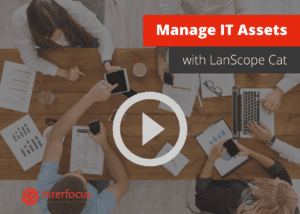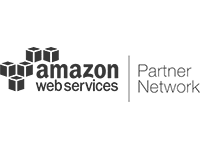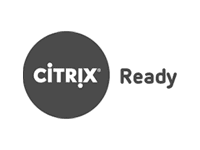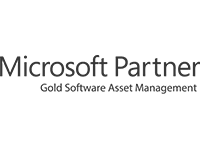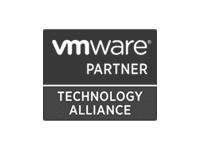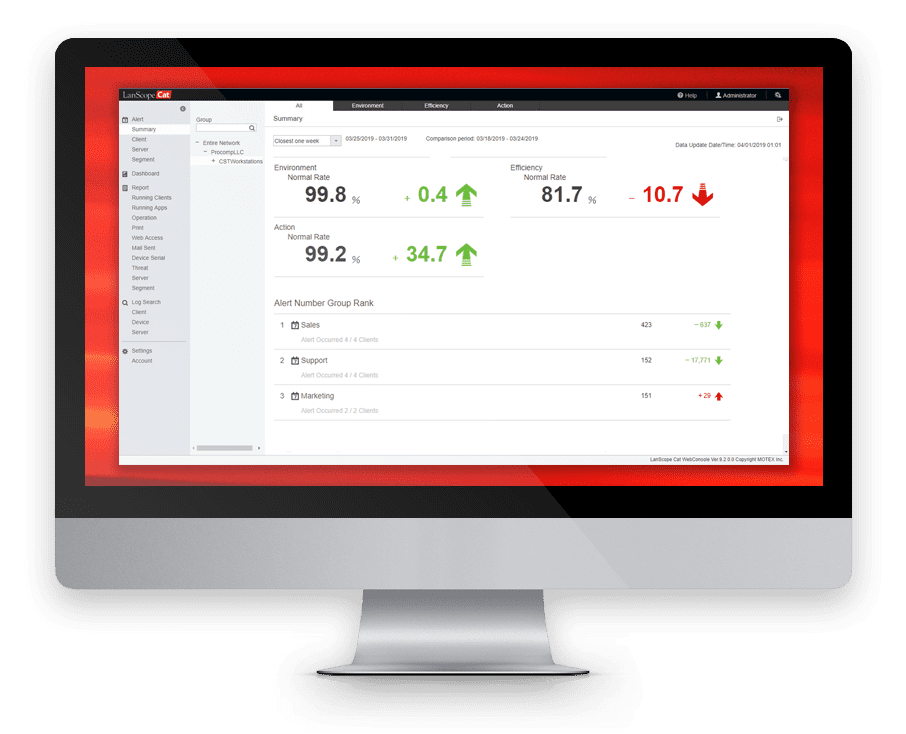
IT Asset Management
What Is IT Asset Management?

IT asset management is not a spreadsheet of corporate devices with serial numbers. Managing your IT assets means having complete visibility into the state of both the hardware and software that is used as part of your business processes. Obtaining visibility into all of your devices can be difficult to envision, but is easily attainable with the right tools.
IT Asset Management–Related Tasks Include:
- Administering corporate networks, both wired and wireless.
- Automatically validating updates and patches to ensure only “good” activity is occurring.
- Continuously logging user activity to monitor how devices are used and how information is flowing both internally and externally.
- Defining and enforcing security policies so that everyone is on the same page about how to manage IT assets.
- Inventorying all IT assets, including how and where they are being used.
- Logging printer usage to track confidential information.
- Managing networked servers that centralize storage and management of information, databases, email servers, shared files, and the like.
- Monitoring external storage or hard drives, including who uses them and where.
- Overseeing permissions to applications and websites.
- Pushing key updates across network-connected devices.
- Tracking and monitoring devices allocated to your employees.
The Typical Lifecycle of IT Assets
- Planning
- Procurement
- Deployment and understanding
- Usage
- Maintenance and support
- Retirement and disposal
Seven Ways IT Asset Management Software Helps Save Your Business Money, Time, and Resources


Maximizes on your business investments by providing information on licensing and registration expiration or renewal dates.

Counters manual work on a spreadsheet—which is time-consuming for your team and opens your IT asset management to human error.

Provides an affordable, scalable solution for growing businesses that are increasingly expanding their network-connected mobile and IoT (internet of things) devices.

Offers significant savings over dedicated in-house technologies and teams.

Increases employee efficiency and productivity in multiple areas.

Provides accountability for all known IT assets, preventing unseen thefts.
Need IT Asset Management Software You Can Trust?
Learn More About LanScope Cat.
The Benefits of Great IT Asset Management Software
There are many benefits that the right IT asset management software can bring to your business:

IT asset management software improves the quality of your IT services and helps your business be more productive.







IT asset management software helps justify IT purchases.







IT asset management software helps lower IT procurement costs and bolster IP procurement planning.







IT asset management software protects your business from breaches by catching potential IT asset vulnerabilities before cyber criminals do.







IT asset management software provides automated information on the proper retirement and disposal of assets.







IT asset management software provides a clear understanding of the costs and valuation associated with your assets.
Why IT Asset Management Must Be a Continuous Project
IT assets evolve as a company evolves; therefore it’s important that IT asset management not be a one-time task. You need to have an IT asset management solution in place that is the most effective for your business today and can handle evolving challenges and increasing assets. With IT updates coming nearly every day, having an ongoing, real-time, scalable solution is the key to great IT asset management.
The Foundations of Successful IT Asset Management
Successful IT asset management allows companies to understand what, where, and how IT assets are being used. Here are some foundational elements.
- Find a solution that can be managed from anywhere, at any time.
- Get company-wide, centralized visibility of all of your company’s IT assets.
- Make the right software decisions for your business.
- Prioritize your most critical IT assets.
The Snowball Effect: Ignoring IT Asset Management


If you’re like most businesses, your IT team is probably small and your resources are stretched thin. If you’re fighting fires or dealing with high-priority requests from management, how much time is left for you to take care of the day-to-day tasks? Ignoring the problem doesn’t make it go away. In fact, the challenges multiply as your business grows.
Major Business Losses from Not Having the Right IT Asset Management System
There are many risks associated with not having the right IT asset management software for your business:
- Breaches and attacks. Cyber criminals are looking for things you aren’t seeing in your network. And what you don’t see can cost you—your money and your reputation.
- Software and hardware expirations and failures, causing problems in day-to-day business operations.
- No oversight over IT assets on your network leaves you open to vulnerabilities in many forms and from many places.
- Increasing IT asset vulnerability over time.
- Lower quality of IT services, causing an unnecessary drop in productivity.
- No ways to justify IT purchases and help standardize the procurement process.
- No clear understanding of the true costs and valuation associated with IT assets.
Manage Your IT Before It Gets Out of Control


Growing number of IT assets. Your growing and changing business means a growing number of IT assets and changing requirements for them, and a corresponding increase in the effort it takes to corral them.
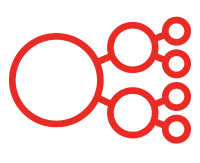

Increased data touchpoints. The increasing digitization of business data and business processes means that more information resides on and is traveling through your network at any point in time. Data exchanged between your internal team, your customers, and your partners all can be targets for malicious actors to attack.


High expectations and dependency. Today’s 24/7 business environment means your employees demand more from their devices and need quick turnaround time for solving IT problems or issues.


13 Questions: How to Select the Best IT Asset Management Software for Your Business
- Does this IT asset management software provide me with the type of reporting that I will need?
- Is this IT asset management software compatible with my business’s hardware, format, and software language?
- Will this IT asset management software address the current problems that my business is having?
- Will this IT asset management software help me manage all the various assets that I need to manage?
- From where will this IT asset management software be hosted?
- Will this IT asset management software help address future problems and growth?
- Does this IT asset management software provide me with the type of notifications that I will need?
- Does this IT asset management software provide me with the type of reporting that I will need?
- What will this IT asset management software cost me in money, time, and resources?
- What will this IT asset management software save me in money, time, and resources?
- What expertise does this IT asset management provider have?
- Does this IT asset management software provider offer technical support?
- Does this IT asset management software provide continuous asset management?
Five Reasons Why Some Business Don’t Have the Right IT Asset Management Solution
- They are using a spreadsheet to track IT assets, which is neither effective nor efficient.
- They are waiting for something to happen. Often, it’s not until a serious attack occurs that companies take action.
- They don’t believe that IT asset management is important to the business.
- They don’t have the resources to dedicate to an IT asset management team.
- They have a limited budget and are worried that most IT asset management solutions are too expensive.
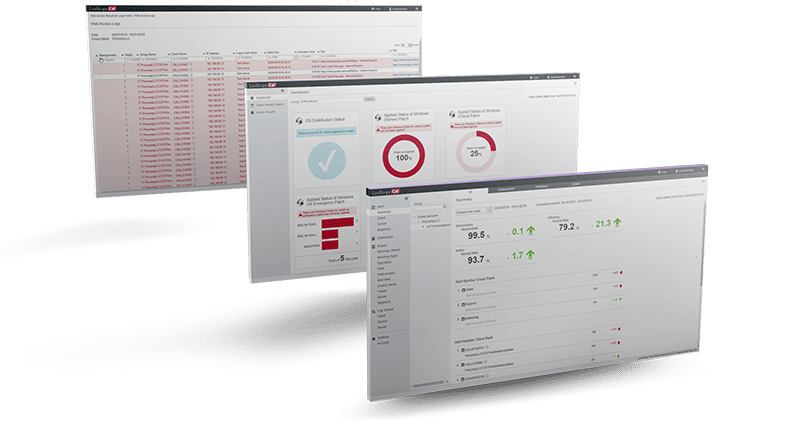

The Top Five Benefits of Integrating IT Asset Management and Cybersecurity
It’s a fact of life for small and medium-sized businesses: IT managers either waste their precious time assembling a complete, detailed view of their network security or they don’t do it at all. For those that do, so much time is spent bringing the data together in one place that little time is left to analyze and react to anything but the most obvious alerts. It begs the question: Why spend countless hours pulling from a myriad of distinct sources of data, manually correlating disparate data types and formats, and trying to connect the dots?
A fragmented approach leaves your company vulnerable to surprises, or worse, cyber attacks. What if you could easily get a unified view of your network and security combined, to maximize visibility into everything happening on the network and strengthen your defenses against threats? Here are the top reasons why small businesses should bring together their IT management and security programs.
- Maximize IT Control & Policy Enforcement with Automation. As the number of devices connected to your business’s network grows, managing those IT assets can be more complex and dynamic. Take corrective action, in real time, when your IT policies are violated or in danger of being violated.
- Gain a Centralized View of Employee Activity & Asset Status. A unified view of your IT activity and utilization shines a light on threats related to fraudulent software, malware, misuse of proprietary data, and ransomware. IT managers with real-time information understand where a threat came from, what it looks like, and where it went on your network.
- Manage All Software & Hardware Assets and Patches. IT asset management and patch management are daily aspects of an IT manager’s work. For growing companies, it should be frictionless and easy to manage.
- Receive Timely Security Alerts. Be informed as soon as suspicious behavior or policy violations occur. Get rapid contextual alerts that you can act upon in real time.
- Defend Against Malware & Ransomware. Know where a threat first entered your network and rapidly establish IT asset management controls to ensure that your company is not exposed in the future.
LanScope Cat combines the best of both worlds at the endpoint: IT asset management and IT security. We have partnered with Cylance® Inc. to bring our customers best-in-class endpoint protection by integrating Interfocus with CylancePROTECT. Using machine-learning algorithms to identify malware in an approach that has been called disruptive, CylancePROTECT brings critical security capabilities to your business. LanScope Cat enables you to know who is doing what, when and that threat activity, whether intentional or accidental, will be stopped.



